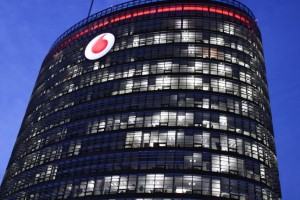Open RAN industry organisation The Telecom Infra Project (TIP) recently launched its TIP Academy to help telcos move towards disaggregated networks, and new technology launches illustrate the increasing demand for open service delivery. Business technology journalist Antony Savvas looks at developments.
The TIP Academy has been developed in collaboration with global IT services and consulting firm Accenture, and has already received the backing of Vodafone and Deutsche Telekom as clients. These telcos will incorporate the Academy’s learning platform into their employee training programmes.
TIP said its participants had expressed the need for an industry-led and operator- and vendor-neutral training service, designed to address a “global skills and resource shortage” in designing, developing, testing and deploying open and disaggregated networks.
That said, telco suppliers continue to drive the Open RAN market with new solutions to help address the telcos’ operational and business needs.

Ericsson and Red Hat
Ericsson and IBM open source subsidiary Red Hat are collaborating to help service providers adopt multi-vendor/disaggregated networks.
Their technical work for the validation of Ericsson network functions with the Red Hat OpenShift platform will help CSPs bring their next generation services to market “faster” in a multi-vendor scenario, they say. The alliance also helps Red Hat better compete against hybrid cloud systems rival VMware, which has been carving out a good niche for itself in the Open RAN space.
“Ericsson and Red Hat want to free up service providers to focus on adding differentiation to their 5G services and value for their customers,” say the partners. “We’ve been working for many months to define the optimal operating model for a multi-vendor scenario, so as to guide customers on how to deploy and fine-tune the combinations, saving them time and resources.”
The pair say they have validated solutions ready to deploy across a network for vEPC (evolved packet core), 5G Core, IMS, OSS and BSS.
Edgecore

Edgecore Networks has also announced a high-speed 400G disaggregated cell site gateway (DCSG). The CSR440 gateway router enables carriers to upgrade their network infrastructure to 400G and address the “challenges” of 5G deployment and the tremendous traffic growth in the network, says the vendor.
The CSR440 offers an open and disaggregated platform that hosts software components from different network operating system vendors, such as RtBrick, ADVA, IP Infusion and Capgemini, Edgecore says.
“Edgecore’s 400G DCSG is a key milestone in disaggregated 5G networking, as carriers can deploy an agile, scalable and multi-vendor mobile architecture built on best-in-class components, and which is capable of unprecedented capacity,” says Mike Heffner, SVP and GM of edge cloud at ADVA.
“Edgecore is offering a way to escape the constraints of closed proprietary systems while also addressing soaring data demand.”
HPE

The Open RAN market is being targeted by HPE too, which has launched its RAN Automation service management and orchestration platform to help network operators more easily deploy disaggregated networks.
The cloud-based, as-a-service HPE RAN Automation offering is expected to be commercially available this November, and follows an Open Ran solution recently launched by arch rival Dell Technologies.
With its intervention, HPE is trying to address the issues that TIP is doing with its training academy.
According to Tom Craig, VP at HPE’s Communications Technology Group, around 60% of mobile network operators still have no automation implemented in their networks “to any scale”.
“Operators see a cloud of complexity coming into the networking environment, they see an ageing workforce demographic, and they see a need to drive down the manual processes in how they deliver and operate their networks,” says Craig.
“How do we drive these projects of disaggregation without again adding complexity to an already strained environment?,” he asks. “We’re saying we will radically simplify deployments for the RAN of the future.”

We can expect to see many more new technology offerings in the Open RAN space. Let’s hope CSPs can catch up.
Industrial satellite
UK communications regulator Ofcom has started a consultation on opening up more spectrum to allow satellite operators to provide a wider range of broadband services, particularly in hard-to-reach areas.
This is particularly a good idea when it comes to serving the needs of industry. The consultation closes at the end of this August, and I imagine other national regulators will be considering similar moves, when taking into account it is estimated that only about 10% of the earth’s surface is served by terrestrial networks.
The maritime, agricultural, mining, oil & gas, utilities, and transport & logistics industries, among others, can’t solely rely on cellular to efficiently and safely run their businesses when it comes to collecting and managing data.
There has been a glaring missing piece in the jigsaw of the global Internet of Things (IoT), which could well be filled by enterprise satellite services. There has already been increased demand for satellite IoT, which is borne out by research from analyst firm Berg Insight.

Berg says the global satellite IoT subscriber base grew to more than 3.4 million connections in 2020. It adds this is projected to grow at a compound annual growth rate (CAGR) of 35.8%, to hit 15.7 million connections in 2025.
Others also see buoyant growth, with fellow analyst Omdia seeing a CAGR of 25% in satellite IoT connections between 2019 and 2025. While in revenue terms, Transparency Market Research projects the market will exceed $6.14 billion (€5.81 billion) by 2031, expanding at a CAGR of 22% from 2021 to 2031.
If the price per kilobyte of more expensive satellite data can be brought down, there is a strong possibility of this growth happening. If more spectrum is opened up to more potential players, business logic dictates there is more chance of that price fall happening.
The author is Antony Savvas, a global freelance business technology journalist.
Comment on this article below or via Twitter: @VanillaPlus OR @jcvplus






